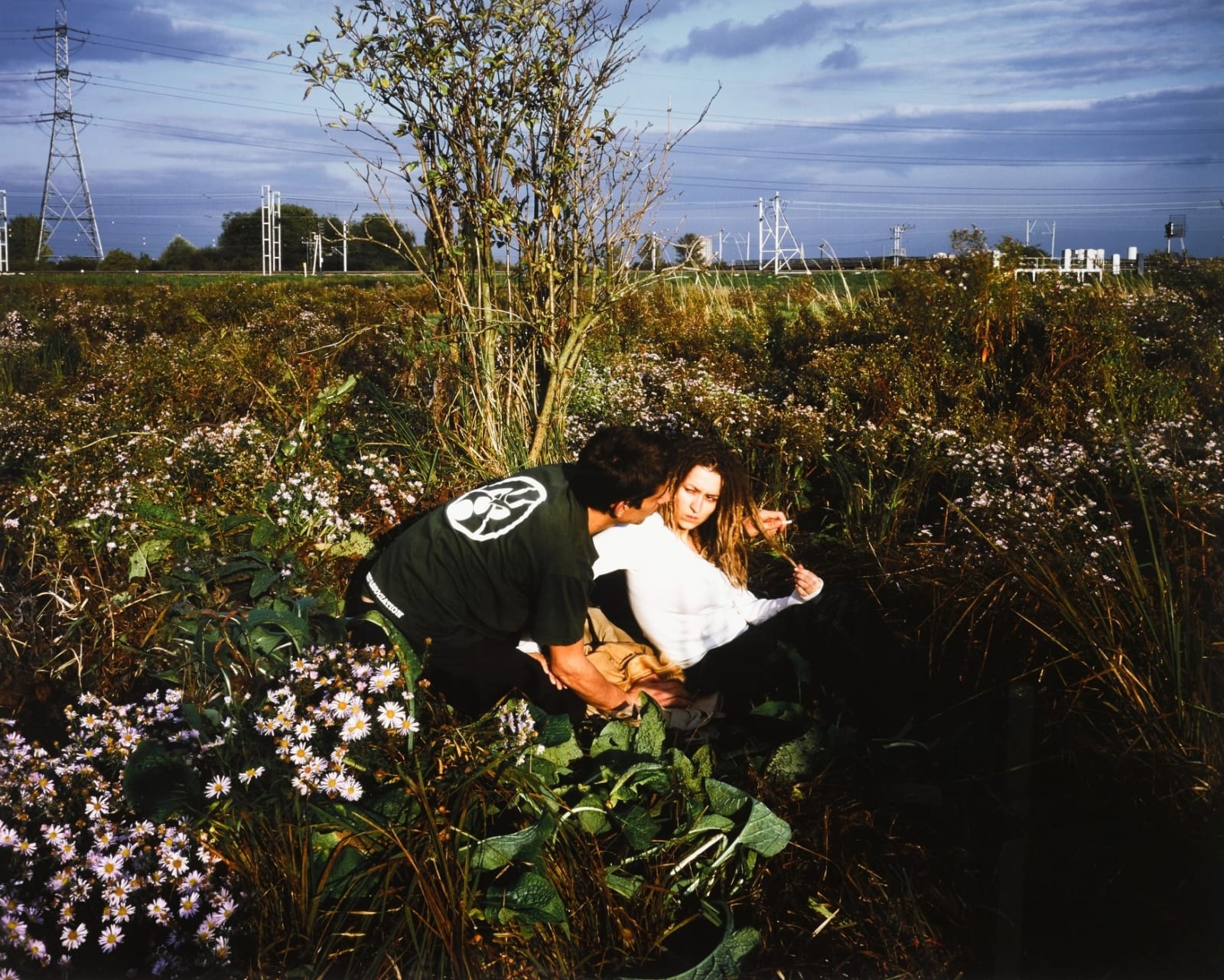Tom Hunter
The Hackney Man, 2000
C- Type colour print
122 x 152.5 cms
48 1/16 x 60 1/16 ins
12513
Provenance
White Cube, LondonExhibitions
London, White Cube, Tom Hunter: Life and Death in Hackney, November 2000 - January 2001 (ed. no unknown)New York, Yancey Richardson, Tom Hunter: Life and Death in Hackney, October - November 2003 (ed. no unknown)
Washington DC, National Gallery of Art, Tom Hunter: Life and Death in Hackney, January - August 2016 (ed. no unknown)
Signed, titled, dated 2000 and numbered 4/5 on a label affixed to the reverse Framed dimensions 135 by 165.5 cm. 53 by 65 in. This work is from the series...
Signed, titled, dated 2000 and numbered 4/5 on a label affixed to the reverse
Framed dimensions 135 by 165.5 cm. 53 by 65 in.
This work is from the series Life and Death in Hackney 1991-2001
Framed dimensions 135 by 165.5 cm. 53 by 65 in.
This work is from the series Life and Death in Hackney 1991-2001
Tom Hunter is known for making sumptuous, colour saturated cibachrome prints that illustrate the lives of various sub-cultural groups, such as squatters and travellers, among whom the artist lives and works. Hunter’s concern with the political issues surrounding the rights of all those generally viewed as society’s outsiders was clearly reflected in the series of photographs exhibited at White Cube. With their formal, stylised compositions, partly based on historical paintings, the works have a grandeur and epic sense of scale that belies the modest, low-key events they depict.
Celebrating the lives of travellers who have occupied the Lea Valley basin (an area on the fringes of Hackney in London), many of the pictures are loosely based on iconic paintings, such as Charles Allston Collins’ Convent Thoughts (1850-51), and Henry Wallis’ Chatterton (1855-56). Much like the Pre-Raphaelites, who often used well-known myths as the basis of their images, each of Hunter’s photographs is based on a particular story. In one, referring to the painting by Millais, Ophelia (1851-2), a girl is lying in a shallow canal, a picture which developed after Hunter heard about a girl falling into a canal, late at night after a party. In this way, his photographs overlay art-historical references with more everyday material, sourced from stories that are not written down, and which focus on the lives of a particular, and generally overlooked, community.Life and Death in Hackney paints a landscape, creating a melancholic beauty out of the post-industrial decay where the wild buddleia and sub-cultural inhabitants took root and bloomed. This maligned and somewhat abandoned area became the epicentre of the new warehouse rave scene of the early 90’s. During this time the old print factories, warehouses and workshops became the playground of a disenchanted generation, taking the DIY culture from the free festival scene and adapting it to the urban wastelands. This Venice of the East End, with its canals, rivers and waterways, made a labyrinth of pleasure gardens and pavilions in which thousands of explorers travelled through a heady mixture of music and drug induced trances. All the images draw upon these influences combining the beauty and the degradation with everyday tales of abandonment and loss to music and hedonism. The reworking of John Millais’s ‘Ophelia’ shows a young girl whose journey home from one such rave was curtailed by falling into the canal and losing herself to the dark slippery, industrial motorway of a bygone era. By taking on some of the attributes associated with the Pre-Raphaelite artists, such as social engagement, which has been largely erased from the cultural understanding of this group, and the obvious intertwining of beauty and nature Hunter has reinvestigated his much maligned inner city landscape and society to create an unusual chronicle of contemporary, urban Britain.


